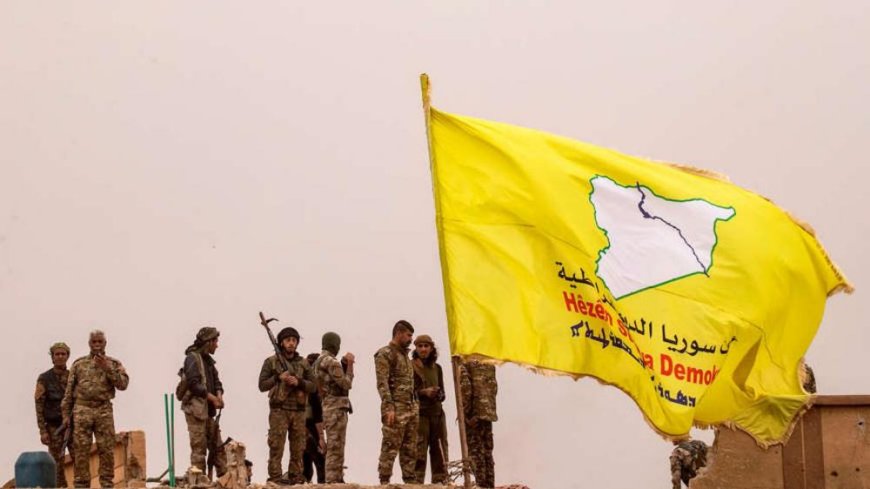5 years after end of ISIS’ geographical control... data indicate its continued danger
The SDF inflicted a resounding defeat on ISIS mercenaries 5 years ago, and eliminated it geographically, but ISIS's bloody attacks in Syria have increased over the past 2 years, so the data actually indicate its continued danger, and its continued efforts to return by exploiting opportunities.

On March 23, 2019, the Syrian Democratic Forces eliminated the dream of ISIS mercenaries of establishing the so-called “Islamic Caliphate,” announcing 5 years ago that their efforts would be crowned with final victory over ISIS in its last enclave in the town of Baghouz.
After ISIS mercenaries lost territory, its hidden remnants resorted to a new strategy, following the so-called “lone wolves” method and (strikes and concealment) war during the past 5 years, It led to massacres and bloody crimes, in preparation for its return, especially since it still has military experience and experienced fighters within hidden cells in desert areas in Syria, and their number is estimated at 10,000 mercenaries, according to SDF commanders.
The attack on Al-Sinaa prison on January 20, 2022, by ISIS mercenaries, which used its sleeper cells to help the escape of its mercenaries detained by the Syrian Democratic Forces, is the largest on a scale since its defeat in Syria in 2019.
Al-Sinaa prison is known for its extremist of 50 different nationalities. When the prison was attacked, the prison witnessed a state of chaos and insurrection, as doors were removed and their locks were broken, which enabled a number of them to escape and enter neighborhoods adjacent to the prison in the city of Hasaka. However, the SDF and the Internal Security Forces quickly regained control of the prison and eliminated those who hid in those neighborhoods.
ISIS then aspired to control the city of Hasaka and reach Al-Hol camp, which houses thousands of ISIS families, and then reach the city of Raqqa, which was once their main stronghold.
Today, the detention centers for ISIS mercenaries constitute fertile ground for ISIS in light of the mystery surrounding their fate, which is sealed by their countries’ acceptance of their return, and this is what most countries do not want, and Sweden’s recent position and refusal to return its nationals may indicate this.
Al-Hol camp, the "time bomb", is no less the most dangerous camp in the world than the prisons where ISIS mercenaries are held, as the wives of ISIS mercenaries who adhere to the ISIS mentality are raising a new, more extremist and violent generation.
The year 2023 witnessed bloody acts in Syria, in reference to the increase in the activity of ISIS mercenaries, which sparked a state of terror and chaos, as it carried out 336 operations, including 165 operations in areas in the NE Syria, and the rest in other areas of Syria, specifically in the Syrian desert, which led to 700 people, including civilians and soldiers, were killed through assassinations and attacks using silencer weapons, killing with sharp objects, or planting explosive devices and mines, according to the Syrian Observatory for Human Rights.
At the beginning of 2024, ISIS mercenaries launched dozens of attacks in the Syrian desert controlled by Damascus government forces, that from February 15 to March 16, the remnants of war and attacks by ISIS mercenaries claimed the lives of 80 people, including women, children, and soldiers in those areas.
ISIS mercenaries also recently escalated their movements in the city of Hasaka, as they targeted several time Syrian Democratic Forces fighters.
The recovery of ISIS cells and their ability to move comfortably in the region comes after a recent and still ongoing wave of attacks by the Turkish occupation state, through which they destroyed service facilities in the region, as well as with the movements of the Damascus government in Deir ez-Zor to plot sedition plans, which enabled ISIS cells to launch more attacks than before.
To eliminate the remnants of ISIS since the liberation of the town of Baghouz, the Syrian Democratic Forces and the Internal Security Forces continue their efforts to limit its return, through a series of operations carried out during the year 2023 against ISIS, and during the current year.
The SDF carried out 73 operations against the remnants of ISIS and its supporters, including 3 large-scale operations (Thunderbolt of Jazera, Revenge for the Martyrs of Raqqa, Strengthening Security in Deir ez-Zor), during which they arrested 352 mercenaries, suspects, and collaborators, including 6 so-called princes and officials of ISIS mercenaries.
The Syrian Democratic Forces were able to kill 13 mercenaries, including 4 dangerous leaders, and Abu Ubayda al-Iraqi, the leader of ISIS, in Al-Hol camp.
Security and intelligence sources of the Internal Security Forces revealed early this year a major plan by ISIS cells to attack Al-Hol camp from inside and outside, after the activity of its cells increased inside and outside the camp, coinciding with the Turkish attacks that destroyed the infrastructure in the region.
The Internal Security Forces launched the “Humanitarian and Security” operation, in its third phase, to stabilize Al-Hol camp, on January 27, 2024, to eliminate ISIS cells, dry up extremist intellectual sources, and arrest wanted persons.
The Internal Security Forces were able to kill the prince of assassinations in Al-Hol camp, “Mahmoud al-Lahibi”, nicknamed “Abu Sufiyan”, responsible for more than 80 assassinations in Al-Hol camp and outside it. He is an Iraqi, and in contact with Abu Ubayda al-Iraqi, who was killed in a joint operation between Internal Security Forces and the SDF in Al-Hol camp on December 27, 2023.
The Internal Security Forces arrested 13 ISIS mercenaries during a large security operation, from Hasaka last February and extended to Al-Shadady district. They were planning to carry out actions to strike security and stability in the NE Syria region.
ANHA














